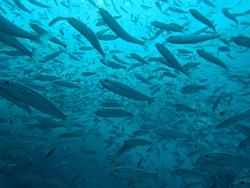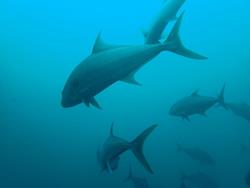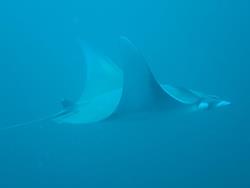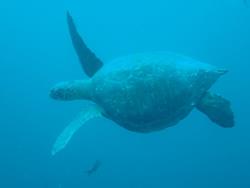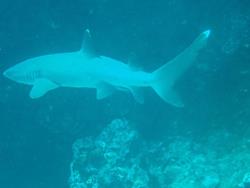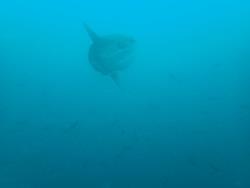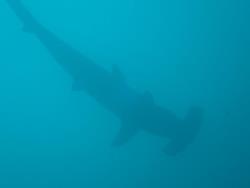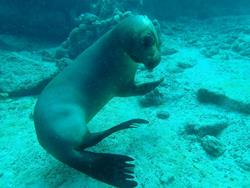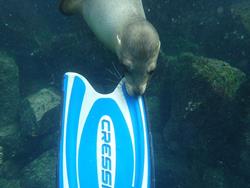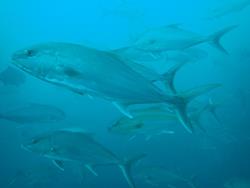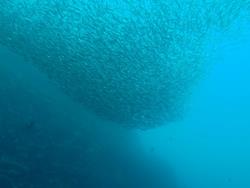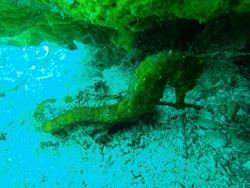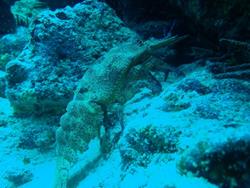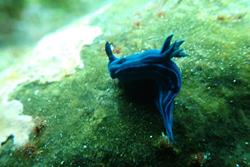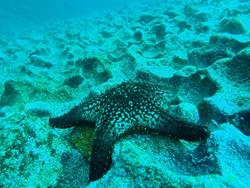BUDGET DIVING IN THE GALAPAGOS ISLANDS by Andrew Falconer
The Galapagos Islands are renowned for their spectacular diving and diversity of fish, but not for budget diving. Undoubtedly the best way to dive them is on a live aboard dive boat which can access the more remote islands such as Wolf and Darwin, however they are definitely not cheap, typically $1,000 per day. It is possible to dive many of the dive sites with a shore-based operation, stay at an Air B & B, or a budget hotel for about one third of a live aboard price. There are several dive shops on Santa Cruz Island (which also has an airport on adjacent Baltra Island) and many accommodation and eating options. One of these dive operations is Academy Bay Diving www.academybaydiving.com that was recommended to me. They are a safe, professionally run outfit with a new dive boat who offer daily double dives that change each day over a week to all the dive sites around Santa Cruz and surrounding islands, with the cost including hire gear and lunch for about $220 per day.
|
There is an abundance of fish including pelagic species |
The days start with early morning departures direct from the harbor at Puerto Ayora or a bus ride and departure from the Baltra channel for the dive sites on the other side of the island and usually finish in the mid afternoon. At the time of year (August) that I dived there was generally a SW wind, which strengthened during the day making the trips to and from the dive sites fairly bumpy. These rides are can take one to two hours. The sea at this time of the year is also rich in nutrients, good for attracting pelagic fish but restricting visibility to around 10 –15metres and also quite cool with temperatures 18 – 23 degrees, including sharp thermoclines on most dives due to the meeting of cold Southern and Pacific currents with the warmer Northern current, which is one of the reasons (apart from their isolated location approximately 1000km from the west coast of South America) for the diversity and endemic nature of many of the fish. In the “summer” months (November to April) the sea is calmer, warmer, and the visibility better, but with less nutrients and pelagic fish about.
|
A manta ray goes gracefully by |
A school of juvenile barracuda |
The number of other divers on the boat with me varied between one and nine, but mostly two or three so it was not crowded. Dive briefings were very thorough and during my seven days diving became a bit repetitive (for me) due to new divers joining in. Lunch also was a bit repetitive after a few days.
|
Turtles are a common site |
The commonest shark is the white tip |
We visited the following dive sites: Floreana Island, Santa Fe Island, Seymour / Daphne Islands, Gordon Rocks, Beagle / Guy Fawkes islets, Seymour / Mosquera Islands, and Gordon rocks again. Each site was different in terms of fish life and terrain, mostly good, although variable depending on the day. For instance Gordon Rocks, which is well known for plentiful fish life and hammerhead sharks was disappointing the first time but amazing the second time.
|
Two first time sightings for me: a sunfish and a hammerhead shark |
The highlights for me were first time events such as seeing hammerhead sharks on many occasions, although not schooling and generally not close up, so because of the visibility getting good photos was difficult, a sun fish at Gordon Rocks (also distant), and close interaction with many playful sea lions.
|
Also a first time with playful young sea lions |
There were also plenty of pelagic fish like trevally and barracuda, white and black tip sharks, turtles and rays including mantas Also impressive were big schools of bait fish and pelagic fish, sea lions and birds attacking and feeding on them
|
Pelagic fish and their target, a large school of baitfish |
On the macro side there was plenty of interest including yellow seahorses, blue nudibranches, and other creatures that I had not seen before.
|
The yellow seahorse is quite common |
There are a lot of endemic creatures |
The underwater topography was also in many cases quite unique, being volcanic with interesting rock formations and erosion patterns.
|
The blue nudibranche is a common macro sight |
The topography is also interesting |
It is not just underwater that the Galapagos are famous for; on the land there are many endemic species such as giant tortoises, flightless cormorants, blue foot booby birds and marine iguanas, plus volcanoes to climb. The Galapagos above and below water are declared as a national park, however there are pressures from excessive tourism, population and illegal commercial fishing that are a concern for the future. The cost of a return airfare from Guayaquil, Ecuador is about $500 plus there are entrance fees totaling about $150.
AUGUST 2017
 Northern Iceland
Northern Iceland Galapagos Islands
Galapagos Islands 